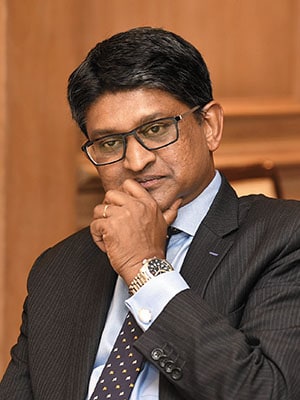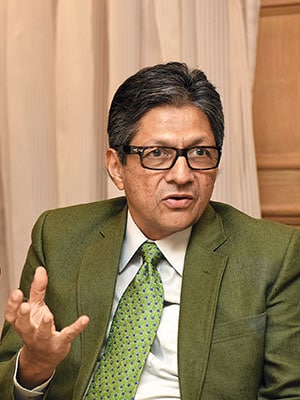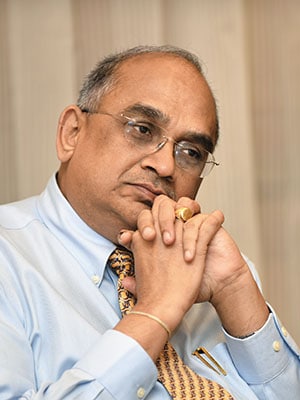
Don't Judge The Market. Make The Most Of It
Prominent fund managers say a bull run is sustainable if reforms take place. And a long-term approach will help the intelligent investor
India’s stock markets and investor community gave an emphatic thumbs-up to the Bharatiya Janata Party (BJP) which came into power with a clear mandate in the general elections, results of which were declared in May 2014. After securing the highest number of seats by any party in 30 years, the BJP saw another round of success in the recently concluded assembly polls in Maharashtra and Haryana. The optimism has been fuelled by Prime Minister Narendra Modi’s promise to create more jobs and bring India back on the high growth track. Several brokerage firms and global banks believe Indian equities could see a sustained bull run if structural reforms are introduced. The Sensex even rose to a record 27,354.99 points on September 8 before a correction took place due to rising global economic concerns. (It later hit 28,000.)
In this context, as part of the fifth Forbes India CEO Dialogues: The Leadership Agenda, top fund managers and investment gurus discussed whether the markets had run ahead of the economy. Bharat Shah, executive director, ASK Investment Managers, Parag Parikh, CEO of Parag Parikh Financial Advisory Services, Raamdeo Agrawal, co-founder and joint MD of Motilal Oswal Financial Services, Saurabh Mukherjea, CEO (institutional equities) at Ambit Capital and author of Gurus of Chaos, and Ratnesh Kumar, MD of Standard Chartered Securities, discussed issues from market capitalisation to dividend distribution tax. Excerpts from the discussion moderated by Senthil Chengalvarayan, editor-in-chief, Network18 Business Newsroom:
Senthil Chengalvarayan: Despite the stock markets having corrected five percent from the top, we are among the best performing markets in the world. However, the average investor, over the past 20 to 30 years, appears to have missed out on making money. What’s your advice to a regular investor who wants to create wealth? Mr Shah, have the markets run way ahead of the economy, and does that matter?
Bharat Shah: It is the business of the markets to be ahead of the economy. To my mind, what we have seen in the past few months has covered the undervaluation. But we are not really buying markets—we are buying stocks. I don’t think that businesses in general have run ahead. An item worth Rs 100, which was available for Rs 60-65 a few months ago, now sells for around Rs 95-98. I am satisfied that the kind of businesses that I would like to invest in for five to 10 years are not particularly expensive.
Senthil: Ratnesh, the markets expect 6 percent GDP growth in five years and an 18 percent increase in earnings over the next five to 10 years. Is the optimism justified?
Ratnesh Kumar: Are we ahead of the future potential of the economy? I don’t think so. The inflection point has happened; confidence and sentiment have returned. But how far these can take the economy, companies or businesses is hard to estimate.
Current earnings estimates have not changed since the government assumed power. So, if I look at valuations and where growth can go, my conclusion is that the markets are yet to capture the substantial recovery in growth. We need more evidence of that and it will be visible in the next six to 12 months.
Senthil: Mr Parikh, what is making the markets so optimistic? Is it betting on what one man can do?
Parag Parikh: After three decades, India has got a leader who has been elected by the people. [Prior to Modi taking charge], the markets were down and out, but now the sentiment is bullish and the recent state elections have given another indication that there is one person who is leading from the front. But why are we judging the markets? We are suffering from sample size neglect [too focussed on index-based stocks], which is making us question whether the markets have run up a lot.
Senthil: Can we put the average investor who has lost out on making wealth on the right track?
Raamdeo Agrawal: India’s is one of the biggest turnaround stories in the world. As per the average index movement in the past 34 years, the ex-dividend return is 16.5 percent. In the last 10 years, the index growth rate is less than 15 percent. So, the markets have yet to catch up.
Also, if we look at the market capitalisation to GDP ratio, it is about 0.8 times, with India’s GDP at Rs 120 trillion and market cap at Rs 97 trillion. From the valuation side, the US market’s ratio is 1.5 times. Mr [Warren] Buffett recently answered in the negative when asked if he saw a bubble in any asset class.
Mr Modi is the best F1 driver for the economy. We have oil prices that are down and out. That has taken care of fiscal and current account deficits and inflation. The post-oil inflation crash is yet to happen. RBI Governor Raghuram Rajan will have to pump-prime the economy and cut rates rapidly. We are sitting on a lot of positive propellants. Our currency has reformed, but I hope it remains trade competitive rather than flow competitive. With all these reforms, this is a reasonably warm market. It is sunny, 24 degrees… go and shop.
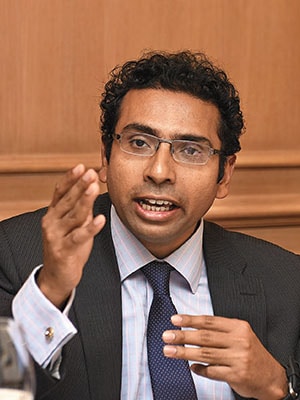
Senthil: Saurabh, should one go and shop? What could go wrong?
Saurabh Mukherjea: The beauty of India is that you don’t need Superman as your PM. The last 30 years have shown that India has a fairly predictable economy. There were three economic waves—one which began in 1984 after Indira Gandhi’s assassination and ended in 1991, another finished with the dotcom bust in 2001 and the third got over around 2010. The first two or three years of each cycle brought 70 to 80 percent of returns from that 10-year period. In the past 30 years, the Sensex has given a near-16 percent return. But 80 percent of that has come in nine years in three blocks (1984-86, 1991-93 and 2004-07). There is hardly anything to write home about if you take those years out.
I am not too bothered about the government; unless it does something profoundly wrong, we should go back to a 6.5 percent growth. And unless something goes disastrously wrong with our economic management, we should have another year of healthy returns.
But I am concerned about China, which has become the warehouse and manufacturing hub for the global economy. If China gets disrupted—because of its financial system challenges and real estate—none of us will understand the effects of a convulsion there. In both China and Europe, in five years, a variety of incentives were introduced to reflate the economy. It did not work and this will become a bigger concern as the years go by.
I sense challenges from China or Europe could come home to roost at some stage. My suggestion to the average Joe is to find a simple SIP (systematic investment plan) and put money into a small- and mid-cap fund. That’s what most people who have an investable corpus should do.
Shah: The concern should not be whether China will continue to grow. The trouble with China is that its entire growth is happening at the expense of falling capital efficiency. The Chinese market has hardly delivered dividends in the past 10 years. Economists often lose their sleep trying to explain things, but the markets are more realistic. Equity reality is simple: Whether there is profit, is that profit real, should that be converted into cash and whether that cash will grow over a period of time.
Senthil: What effect can a crash in China have on capital allocation outside it?
Agrawal: We cannot understand our own GDP and what is driving it. Nobody could explain the sharp correction in global oil prices. These things are beyond us and too complex. At the end of it, it is all about [investing in] companies.
Kumar: But China’s economy has a lot of real efficiency. It has an element of decisiveness about various things and it will be too premature to write off China. China is an economic driver of the world and it will remain significant for India.
Shah: Concerns are an alter ego of the markets. They will forever dissuade you from participating in a sensible way. Worrying about issues over which you neither have control nor predictability, or which have a coherent relationship to a simple business like investing does not make sense. We make it grandiose and over-complicated by adding dimensions that are spurious.
Senthil: Mr Parikh, you spoke about value traps. How do you avoid them?
Parikh: When India had a GDP growth of 7 to 8 percent, all airline industries expanded operations as people started flying more. But what happened to the profits of the airlines? They went bad. It is not necessary that GDP growth will result in companies making profits. We all are making decisions out of limited knowledge. Those are the biggest value traps.
Kumar: We must understand that if there is something cheap, there is a reason why it is available at that price. The first step to avoid value traps is to have the humility to understand that the markets are the most powerful thought process.
Shah: We have a mindset where we substitute arithmetic for the good judgment of the quality of the business. If something is available at 80, another at 18 and the third for 28, to assume that 28 is necessarily more expensive than 18 is a value trap. The real value trap happens when we do not define the term value.
Mukherjea: Ambit data crunching shows that out of the 5,000 [most active] companies listed in India, 4,000 failed to keep up with inflation over the past 20 years. So, 80 percent of the market does not even beat inflation. This suggests that 80 percent of the Indian market is a value trap. It is the other 20 percent that people earn their living from. What complicates the challenge [of stock picking] is that India has the highest churn ratio amongst the world’s top markets. India’s market churns 50 percent every 10 years. The US churns about 25 percent, Brazil about 30 percent and Hong Kong 30 percent. We have only 20 percent of the market worth looking at and even that churns at a rapid rate.
We have broadly been a healthy economy for the past 20 years, but stock selection is tough. Unlike other markets like Brazil and Russia, which are dominated by one or two sectors, India has a little bit of a lot of sectors. The rewards are disproportionately higher for the person who gets it right.
Parikh: The way out is that instead of stocks, you start calling them businesses and then look at investing. You will not get into some of these value traps then. In a business, you become a minority shareholder.
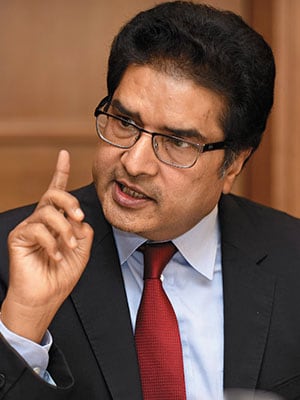
Agrawal: In the stock markets, there are 50 to 60 companies that are like 80 carat gold, another 200 like 24 carat gold, and about 4,000 firms whose caratage keeps dropping, but the shine goes on increasing and keeps the investor dazzled. Somehow, India has developed this single-stock investing culture. If we tell people to invest in a scheme where a fund manager gives 24 percent compounded returns for 20 years, they will not want to buy into it. So that is one trap.
Often investors buy into a stock when they see a cheaper P/E ratio and become long-term investors in a junk company. And then they book profits in a good company, but stay invested with the bad one. So they completely mess up the investment process.
Shah: It is like plucking the flowers to water the weed.
Agrawal: This is the difference between an amateur and a professional. Amateurs will love booking profit while professionals will cut losses and allow profits to run the full distance.
Kumar: One value trap is buying a company [stock] that appears to be cheap, but is not. And another is ascertaining and concluding that something is too expensive and not buying it. The biggest determinants of value creation are ROE (return on equity) and ROCE (return on capital employed). The moment ROE and ROCE go above the cost of capital, every percentage point has a disproportionate impact on the fair value of the company. This is what common investors do not understand.
Mukherjea: India, which is a trillion dollar economy, has a savings rate of 30 percent of the GDP. However, only a smidgen of that comes into the stock markets.
Senthil: So how do you increase liquidity in the system?
Mukherjea: We, as brokers, have chased foreign funds. But there is a huge amount of domestic financial wealth that can flow into the system if two or three measures are taken. We need a reasonable amount of stability in macro-policy, like in the capital gains tax regime. Secondly, we need ways to disincentivise flows into gold and real estate. Thirdly, we have to find a solution through which the tax department can crack down on black money. With these measures, money that can come into the domestic financial systems will overshadow any FII flows.
Parikh: The problem with our markets is corporate governance and no fear of the law. Also our markets, in some cases, are over-regulated. In terms of investor philosophy, when we cannot understand the reason for our greed and fear, we start trading in markets [instead of investing].
Kumar: But our mutual fund industry and the long-term portfolio approach has grown dramatically. The long-term, professional approach to investing will result in greater flows into equities.
Shah: Equity is a bit more specialised and one needs the right temperament and wisdom for investing. Out of 100 companies, 95 are not worth investing in on the basis of one or more parameters. And out of 100 participants, 95 have no skills to invest in the markets. Wealth destruction dissuades others from investing. The do-it-yourself approach is easy but dangerous.
Agrawal: One issue is double dividend taxation. In Indian equities, dividend has been unintentionally handicapped. Later, it became like corporate tax. For an owner-driven type of management, there is no incentive to pay dividend. Pay-out ratios are continuing to fall. The investor then only looks for capital appreciation. You are not looking at the performance of the assets. Barring MNCs and some professionally run managements, most have no incentive to pay dividends.
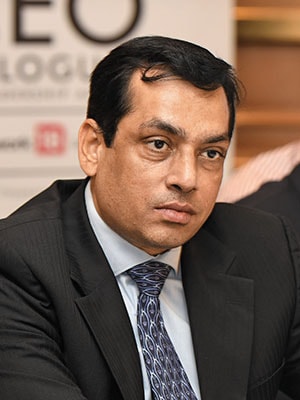
Senthil: How do you get more people to invest?
Kumar: Any artificial barriers for any form of savings to come into equities should be removed. Considering that the mutual fund industry is garnering liquidity into the stock markets, we have to analyse why asset management businesses are not profitable in India.
Mukherjea: In our small- and mid-cap stocks, the supply is rationed by promoters. India is the least liquid in the top 15 global markets. We need to do something to increase free float—we are the lowest amongst all at 45 percent. In some of the highest rated mid-cap stocks, the free float is 25 percent. So we have created a volatile and inefficient market. The regulator needs to get free float up to at least 50 percent. We need to give the public more choice.
Agrawal: We should abolish dividend distribution tax. If that is not possible, bring it down to to 7 percent. We need reforms in the dividend policy. Otherwise India will become a super-speculative market. Also, capital gains tax and business income policies must be clearly defined.
Senthil: Won’t you have a backlash from small investors?
Agrawal: But it is stopping the tap from being opened. If the corporate does not pay dividend, but allocates the capital well, it is okay. However, this is not happening. The corporates go and buy bad [global] assets. The entire 1992 Harshad Mehta scam created fear amongst bureaucrats and regulators. But so much has changed in the past 20 years.
Shah: People seem to participate more in fixed income. Equity is a marriage and fixed income an affair. But we treat the affair as marriage and suffer. In the mid-1980s, almost 17 to 18 percent of the wealth of individuals was in equities; now it is less than three percent. Very little allocation flows into equities, which impacts wealth creation.
Agrawal: All our regulations are for trading, not for investing. Investing is about asset performance while trading is about price performance.
Senthil: So what should the government do?
Agrawal: What is investing: Hen for eggs, cow for milk, stocks for dividends. But nobody buys stocks for dividends. This should change.
Mukherjea: Outside sub-Saharan Africa, India has the highest cost of capital. This will be the case if you disincentivise savings from coming into financial markets. If you want to turn this vicious cycle into a virtuous one, get savings to come into financial markets, bring the cost of capital down, which will help long-term investing come back and ensure that returns become smoother and volatility reduces.
Agrawal: Our regulations are such that investible money in India cannot be managed in India. In 10 years, we should be able to manage global money from India. Singapore is doing a lot to attract fund management, while India is doing everything to drive professionals away.
(This story appears in the 30 November, -0001 issue of Forbes India. To visit our Archives, click here.)


